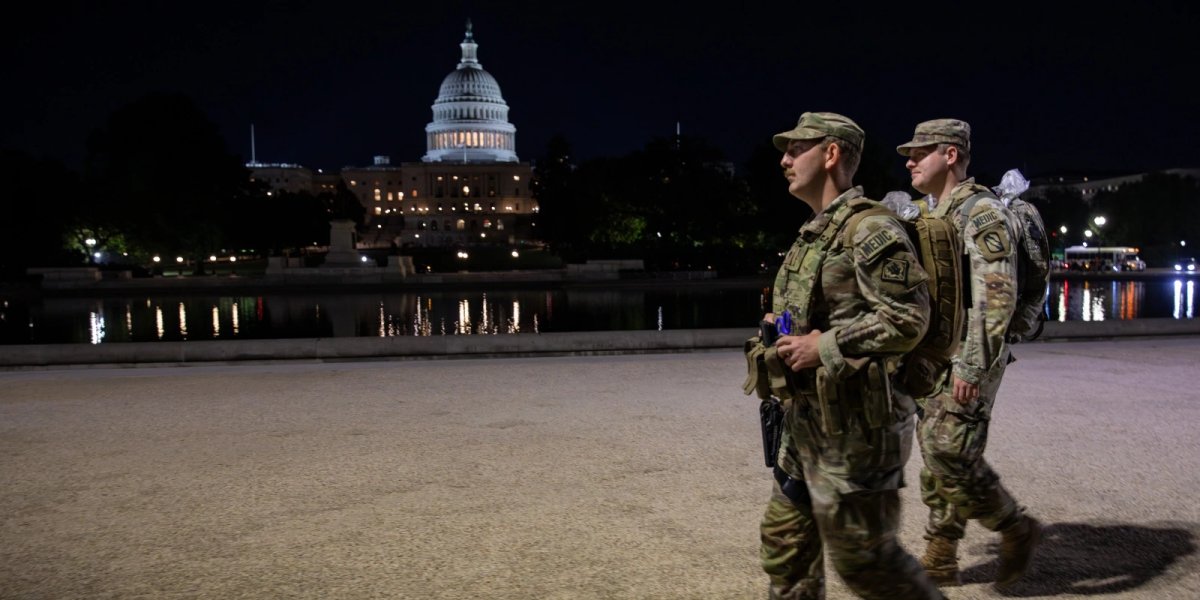On a windy October morning, the Johnson family sat around their kitchen table, worried. Sergeant Tom Johnson had just told his family he might miss his upcoming paycheck due to the shutdown. "If those funds don't come through, we'll have to make tough choices," he said. The threat of unpaid bills and shrinking savings hung over their Sunday breakfast.
When the government shuts down, offices close, and paychecks stop. For troops like Sergeant Johnson, missing pay is a real crisis. Last weekend, President Trump told Defense Secretary Pete Hegseth to use leftover R&D funds to process military pay on October 15.
As the Pentagon moves forward, fundamental questions emerge about legality and consequences. What would happen if this workaround succeeds, and what fallout could follow if it fails? Here’s what we know, and what’s truly at risk.
Pentagon's Use of R&D Funds for Troop Salaries
According to Department of Defense officials, about $8 billion in unobligated research, development, test, and evaluation (RDT&E) funds from the prior fiscal year have been identified to cover mid-month military pay if the shutdown continues.
A Pentagon spokesperson told Breaking Defense that the department will use available funds to issue mid-month paychecks if the funding lapse continues past October 15.
President Trump also framed the move as an order under his role as Commander in Chief to “use all available funds” to pay the troops, according to Reuters.
Legal Challenges: Congressional Oversight and DoD Funding
This is not a clear legal path. Key guardrails limit what the executive branch can do:
Appropriations and Purpose Statute (31 U.S.C. §1301)
Congress designates funds for specific uses.
RDT&E funding is for research, development, testing, and evaluation—not payroll. Using these funds to pay troops would breach this law unless Congress specifically permits it.
For example, a similar reallocation by the Department of Health and Human Services was stopped for not matching the funds' original purpose, highlighting strict enforcement.
Antideficiency Act (ADA)
This law bars spending or obligating funds without congressional approval.
During a shutdown, paying salaries without explicit authorization violates this act.
Expired or Unobligated Funds (31 U.S.C. §1553)
Expired funds from prior years can't be used for new obligations, only for adjusting previous ones.
Reprogramming and Transfers
Moving money between accounts normally requires congressional approval. Without this, the action may violate the ADA and prompt audit scrutiny.
Roll Call described this maneuver as “legally untested” and “potentially in violation of longstanding appropriations law.”
Critics argue that even under commander-in-chief powers, there is no inherent authority to repurpose funds appropriated for another purpose.
Impact of Pentagon's $8 Billion Plan on Military Pay
If the Department of Defense successfully executes the plan, service members will likely see their October 15 paychecks arrive on time.
That would bring short-term relief to hundreds of thousands of families. Morale would hold steady, and immediate political pressure on Congress might ease.
However, these short-term gains come with significant consequences for key stakeholders.
Using leftover R&D funds could disrupt future research programs, expose DoD officials to legal penalties, create funding gaps, and weaken Congressional control over military spending.
Risks of Pentagon's Funding Strategy for Troop Pay
Congressional Pushback
Lawmakers could reject the move, demand repayment of those funds, or reduce future appropriations in response.
If Congress opposes the reallocation, it could force the Department of Defense to reverse payments or face reduced funding for other programs, creating uncertainty for both the military and national defense priorities.
Research and Development Cuts
Pulling from RDT&E could slow or cancel research programs, weapons testing, or modernization projects. Analysts warn it could stall technology development and delay defense contracts.
For instance, the delay of the F-35 stealth fighter jet upgrades, a flagship program, could result in a funding gap estimated to be around $500 million. This demonstrates the tangible costs and trade-offs involved in redirecting funds.
Legal Challenges and Audits
If the GAO finds the action violates the Antideficiency Act, officials involved could face audit findings, administrative penalties, and potentially career-ending consequences.
Service members may also experience future disruptions in pay if penalties are enforced.
Precedent and Separation of Powers Risks
If this move goes unchallenged, it could weaken Congress’s control over appropriations, setting a precedent that allows future administrations to redirect funds freely.
This erosion of oversight could destabilize long-term defense funding and planning.
Uncertainty Beyond October 15th
The $8 billion covers only one pay period for troops. If the shutdown continues without a new funding bill, service members could face missed paychecks and renewed financial stress in subsequent periods.
Civilian and Contractor Fallout
If only uniformed service members are paid, civilian employees and defense contractors may face delayed payments and morale issues, potentially disrupting the broader support network for military operations.
DoD's Alternatives Without Utilizing R&D Surplus
If the administration chooses not to use the R&D funds or is blocked from doing so, troops would miss their October 15 paychecks unless Congress passes emergency legislation. That would put immediate strain on military families, many of whom already live paycheck to paycheck.
Historically, missed paychecks have triggered intense political backlash. In 2013, Congress passed the Pay Our Military Act to protect troop pay during a shutdown. This time, no such law has been enacted.
Without it, troops would continue working but not receive pay until Congress restores funding. That delay would raise food insecurity and financial hardship nationwide.
What About the U.S. Coast Guard?
The Pentagon’s plan to use leftover research and development (R&D) funds to pay active-duty personnel during the shutdown does not include the U.S. Coast Guard.
The Coast Guard falls under the Department of Homeland Security (DHS), not the Department of Defense (DoD), and operates under a separate appropriation. Because the current workaround applies only to DoD-controlled funding accounts, Coast Guard members will not receive pay through this measure unless Congress or DHS establishes a separate authority.
The Coast Guard confirmed this in an official workforce guidance memo, stating that “excepted employees work during the shutdown but may not receive pay until the government reopens.” Furloughed employees do not work or receive pay during the lapse in appropriations. However, both groups are guaranteed back pay once funding resumes under the Government Employee Fair Treatment Act of 2019 (Public Law 116-1), which covers all federal civilian employees.
This situation mirrors the 2018–2019 federal government shutdown, when Coast Guard personnel continued performing critical missions without pay because DHS had not enacted appropriations, while the DoD did. During that shutdown, Coast Guard members relied on food banks and emergency grants, highlighting the unique vulnerability of the service during funding lapses.
Several members of Congress have reintroduced bipartisan measures, such as the Pay Our Troops Act and the Pay Our Coast Guard Act, to ensure Coast Guard personnel are paid during future shutdowns, but as of today, no such bill has been enacted for the current funding lapse.
In short, the Pentagon’s $8 billion workaround would protect pay for DoD service members, but Coast Guard families remain excluded and must wait for congressional action or separate DHS authority to receive their pay.
Consequences of Pentagon's Funding Decisions for Troops

Legal experts note that few private parties would have standing to sue over an Antideficiency Act violation. However, the GAO could still find the action unlawful and report it to Congress, forcing accountability.
What Troops Should Watch
Official DoD Guidance: Any formal memo or directive confirming the fund transfer.
Congressional Oversight: Hearings or resolutions in response to the move.
Program Impacts: Any delayed or suspended research projects.
Future Pay Periods: Updates from the Defense Finance and Accounting Service (DFAS) about upcoming payments.
GAO Findings: Whether the agency issues a ruling or audit determination on the legality of the shift.
A military paycheck is not a privilege; it’s earned through service. Whether this fix works, it shows how fragile the system becomes when politics interferes.
Military Paychecks and Trust in Pentagon Leadership
Missing a paycheck can put a military family in crisis. The Department of Defense’s choice to use leftover R&D funds might be a bold and needed step to protect families, but it is also a risky legal move. If it works, troops get paid on time. If it fails, the effects could reach from defense labs to kitchen tables across the country.
While this workaround is more than just a budget issue, it's a test of trust. Whether this becomes a quick fix or a long-term battle depends on what Congress, the courts, and the country decide to do next.
To move forward, Congress could consider temporary pay authority that allows for military pay during shutdown emergencies or implement an automatic continuing resolution that ensures uninterrupted funding. These solutions could turn a contentious issue into an opportunity for constructive engagement, maintaining both the morale of the troops and the balance of power in legislative processes.
Suggested reads:




